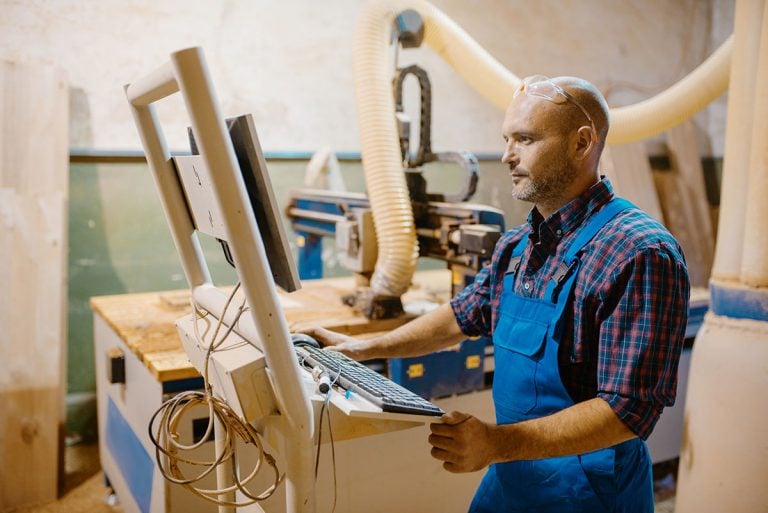It’s hard to find a construction site these days that isn’t using any kind of automation. Contractors are using drones to make site inspection faster; project owners take advantage of 3D printers to speed up the turnover of skyscrapers, and even subcontractors are already shifting to remote-controlled robots and heavy equipment to take over bigger tasks.
There’s just so much that technology’s introducing at the construction site that it’s making almost every task easier and faster. While this is advantageous to contractors because of the minimal operation and maintenance costs that automation requires, it also creates fear among human laborers that their services may no longer be needed in the future.
But it’s not just the position of the crew members that are compromised. Replacing the labor force with robots and automated equipment means there’s no more need to hire foremen and assistant project managers. There will be no more need for them when there’s no team to manage.
In a study carried out by Pew Research Center, 72% of the Americans are worried that automation technology will take over jobs that’s been usually carried out by humans. Furthermore, 64% of the participants in this research are anxious about losing their purpose in this modern world.
In the construction industry, though, resistance isn’t the right response when discussing automation. Rather than workers looking at the possibility that they’ll be replaced, they should be oriented to the benefits of using automation in the workplace instead.
Automation can make the work of the laborers smarter, faster, and more accurate. And if you didn’t know yet, automation can increase job opportunities in the construction site with more operators, technicians, mechanics, and maintenance crew needed to handle the automated tools.
So, all the worries may have just been influenced by the sci-fi movies “Battlestar Galactica” or “The Matrix.” In the real world, even the most advanced Artificial Intelligence tech needs human data to come up with a decision.
Machines Still Can’t Replace Construction Laborers
There are things that robots and digital technology won’t be able to do. Decision-making is one and the other is hanging on a rope to attach snaps for the pipes. And if this isn’t proof enough, just consider the shortage of labor force in the construction industry today.
Construction isn’t a place where human workers can be fully replaced with automation. While technology has revolutionized construction projects making turnaround time shortened by almost 50%, it still takes a skilled worker to operate these systems. Furthermore, problem-solving, planning, scheduling, and designing the project still need human involvement.
So overall, the integration of both human labor and technology in the site will lead to a higher success rate and profitability.
Automation on Increasing Recruitment in Construction
There’s now an ongoing shortage of labor in the construction industry. The largest age cohort employed in the construction industry remains to be the older workers when the industry seeks to hire the millennial age group who can work longer for the contractors and who may be stronger.
This workforce is tech-savvy and is focused on learning newer trends in the revolution. The skills they want to develop aren’t the ones that require a manual mode of work. They are looking for training and opportunities to learn innovative methods. Following this, automation can attract younger talents and when these Millennials see that they can feel comfortable in the construction site too, the shortage can be filled.
Furthermore, creating a tech-friendly environment by using productivity software, AI, apps, gadgets, and robotics among many others will foster a new generation of construction workers who may be more productive than the older gens.
Hence, by incorporating automation in the construction site like construction project management software such as Pro Crew or construction process automation like 3D printing, the construction industry can get the millennials and even the Generation Z members enter the labor pool. This then makes it advantageous for the contractor and the project owner as they have stronger and more creative people who can work for them for a longer time.
Employing Humans and Automation in Construction
To get the best of both worlds, contractors should find a way to mesh human labor and automated tools together. Human workers should be trained to use equipment and technology so they can leverage them to their full potential.
Making workers experts in using the 3D printer or remote-controlled cranes and other heavy equipment will make the work easier. Training them on how to use construction management software will make information travel faster. Introducing AI in the construction site can make decision-making more informed.
From these tandems, you’ll see that machines don’t replace humans. They are only tools to enhance efficiency and productivity up to five-fold. So by employing both in your construction project, you can keep up with your demanding schedules and stay competitive in the oversaturated construction industry.
Automation in Boosting Productivity
While we noted that automation is a great way to attract the younger generation to apply for a position at the construction site, the benefits of automation are far more than that and the results are more immediate.
First, we talked about how automation speeds up processes and, hence shortening the turnaround of the project. Technology has replaced a lot of the painstakingly slow processes in construction like monitoring and submittals. These two important steps can now be done in just a single construction project management software like Pro Crew. And not only does it cut down the time needed to complete these tasks but it also reduces the cost allotted on them by almost 30%.
Reducing the time spent on a task from weeks to minutes allows you to reinvest your efforts as well as your workers’ on other tasks. This will then reduce the money spent on payroll, which takes up a huge part of the construction project.
Mechanizing Safety
Automation at the construction site means creating a safer environment for human laborers. And as a contractor, you should know that safety plays a big role in making workers more efficient.
For example, adding a drone for daily inspection, most especially when the building is already on their higher floor levels, makes it safer and more comfortable to see where the project is without having to walk through each phase. Bringing in remote-controlled machines eliminates the need for laborers to take on potentially risky tasks. Using augmented reality can make problem detection faster and less dangerous too. Automated cranes can prevent falls. Machines to assemble scaffolds make it sturdier so that collapse will be prevented.
Another thing that automation can do is to reduce accidents caused by repeating and tedious tasks. There’s a big tendency that a worker gets easily worn out doing the same, difficult thing every day.
Bending corrugated bars, for instance. There’s a lot of corrugated bars needed at the site and bending them every day by a single person can indeed form a habit. However, when a task becomes a habit, he loses his focus eventually and wouldn’t notice that his way of handling the task is already becoming risky. This will lead him to run his hands through the vending machine. By adding an automated process of feeding the bars through the bender will reduce this kind of accident.
Since human laborers can’t be removed in a construction project, you can use automation to reduce risk factors. And when accidents are cut down, everyone can accomplish their duties on time and there will be no more extra expenses on hospitalization or treatments.
Automation on Resolving Communication Problems
Lack of communication in construction is a huge roadblock for achieving success. But this can’t be avoided given that the construction industry employs people from diverse groups. Workers can’t understand each other, either because of language barriers or because of the age gap. This problem can lead not only to delays but also to greater fatalities because an important instruction was miscommunicated or not disseminated at all.
Fortunately, automation also brings software at the worksite. Communication software like Pro Crew builds a common language that different nationalities can master and understand. It also makes sharing of instructions almost instant as messages are passed on via a network and the cloud. So from plans to permits, schedules, and bulletins, all workers can be informed to make sure that everyone’s on the same page.
Automation and Human Labor – Super Efficient Work
There’s more automation that needs to be developed and employed at the construction site. As mentioned, it doesn’t necessarily replace human labor but it serves as a tool for people to be more efficient and productive in doing their jobs.
It is now becoming more difficult to find new skilled workers. The remaining skilled workers in most construction sites are now growing older but millennials prefer to secure jobs at the offices rather than taking on blue-collared jobs. If this continues, the construction industry will suffer from a bigger labor shortage, making it unable to build, renovate, or repair structures.
But with automation, this age group will be attracted to take on a position in the construction field. With a stronger and more innovative worker handling automation at the construction site, companies will see better and faster benefits and the industry will meet the growing demands of commercial construction.






1 thought on “Automation vs Human Labor: Reasons to Have Both in Construction”
Who wrote this piece. A name will be appreciated. thanks